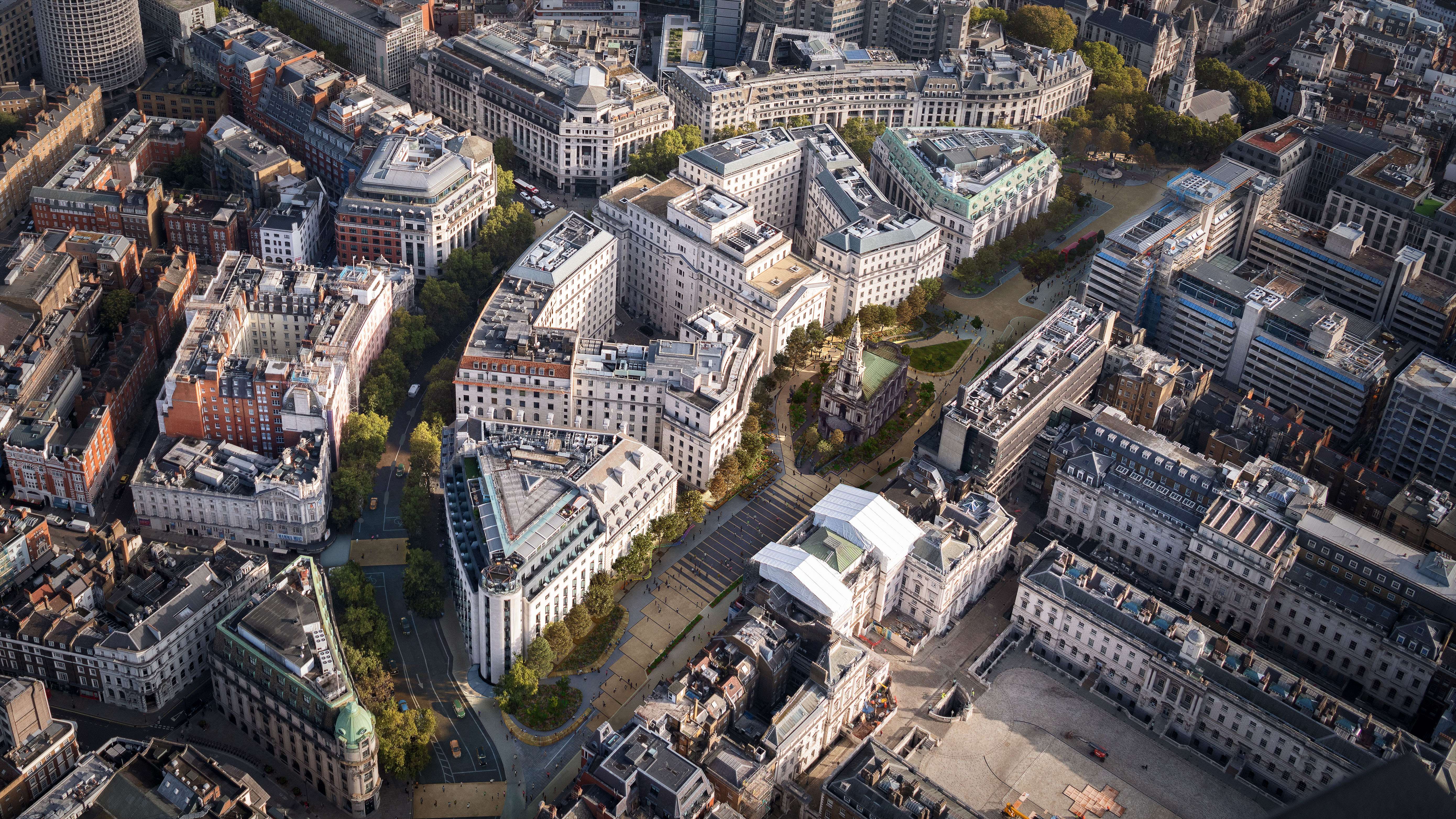
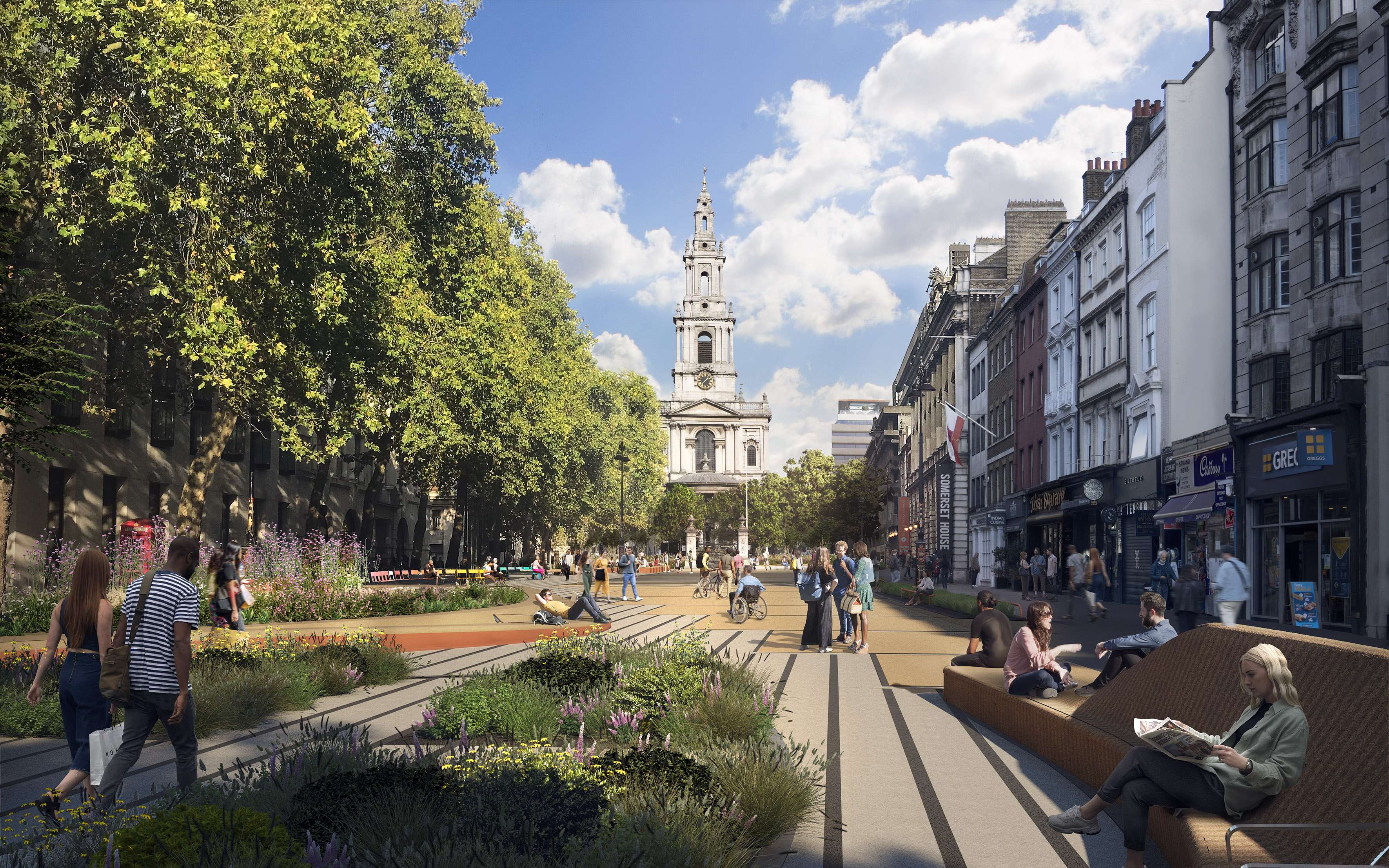
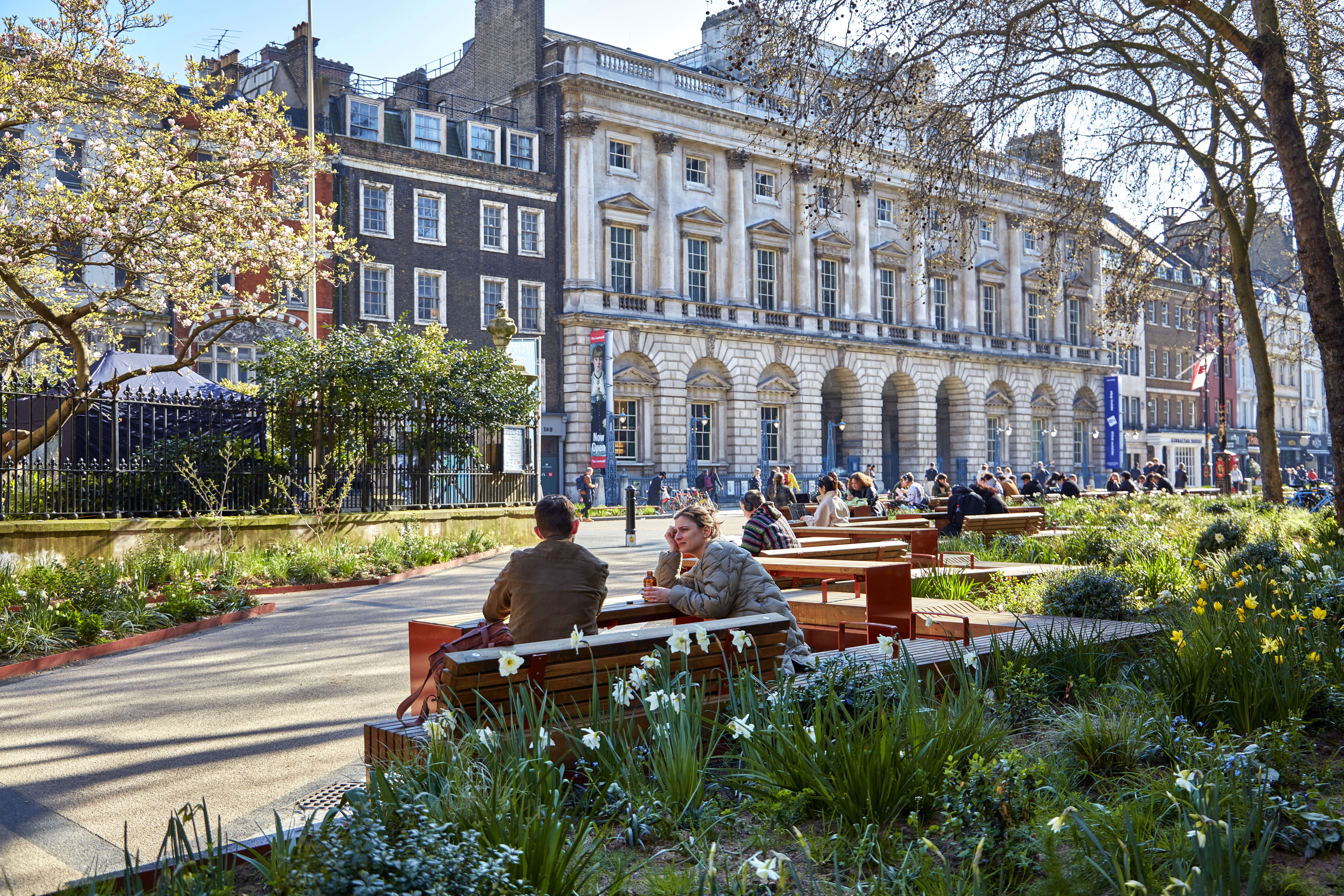

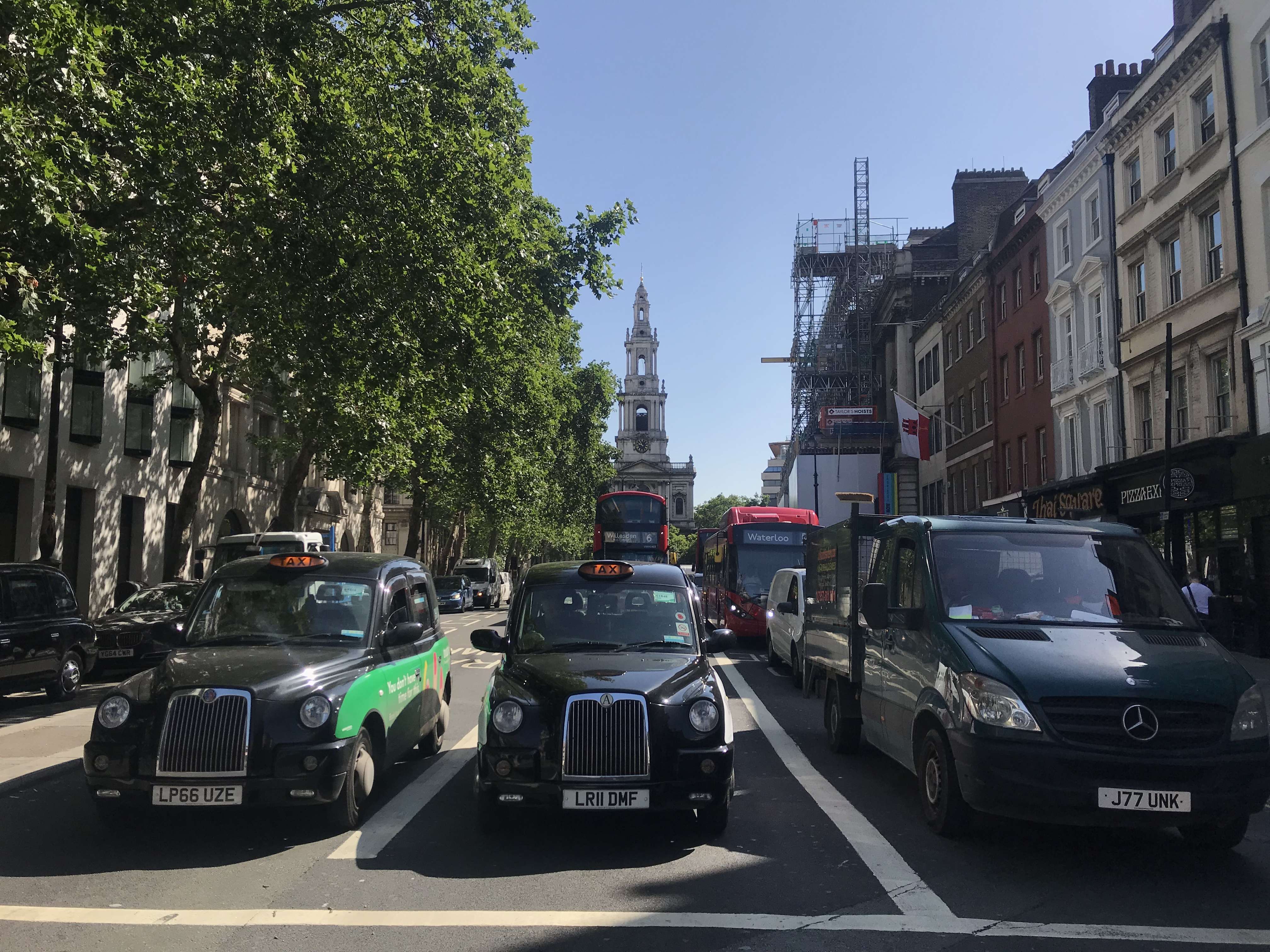
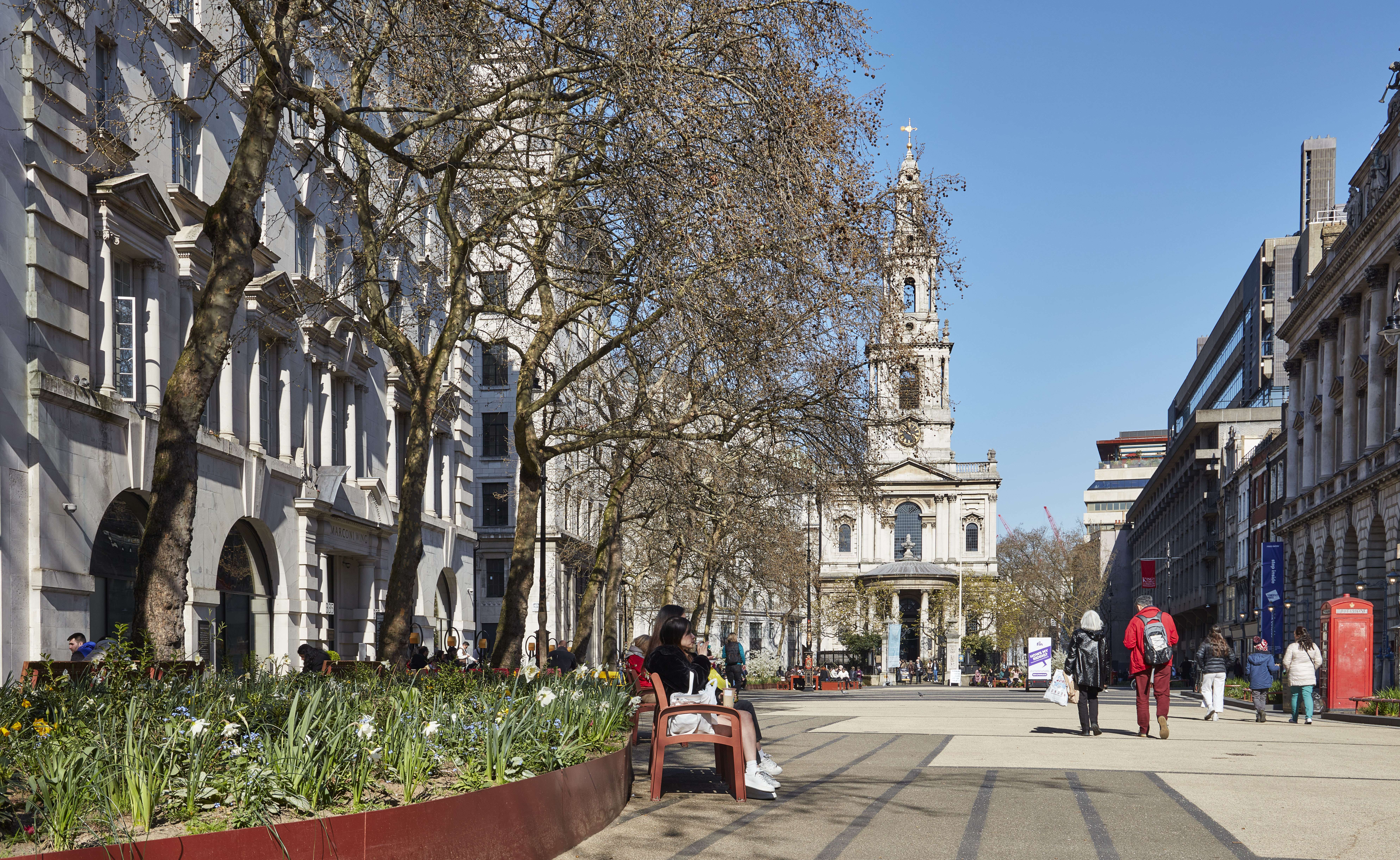

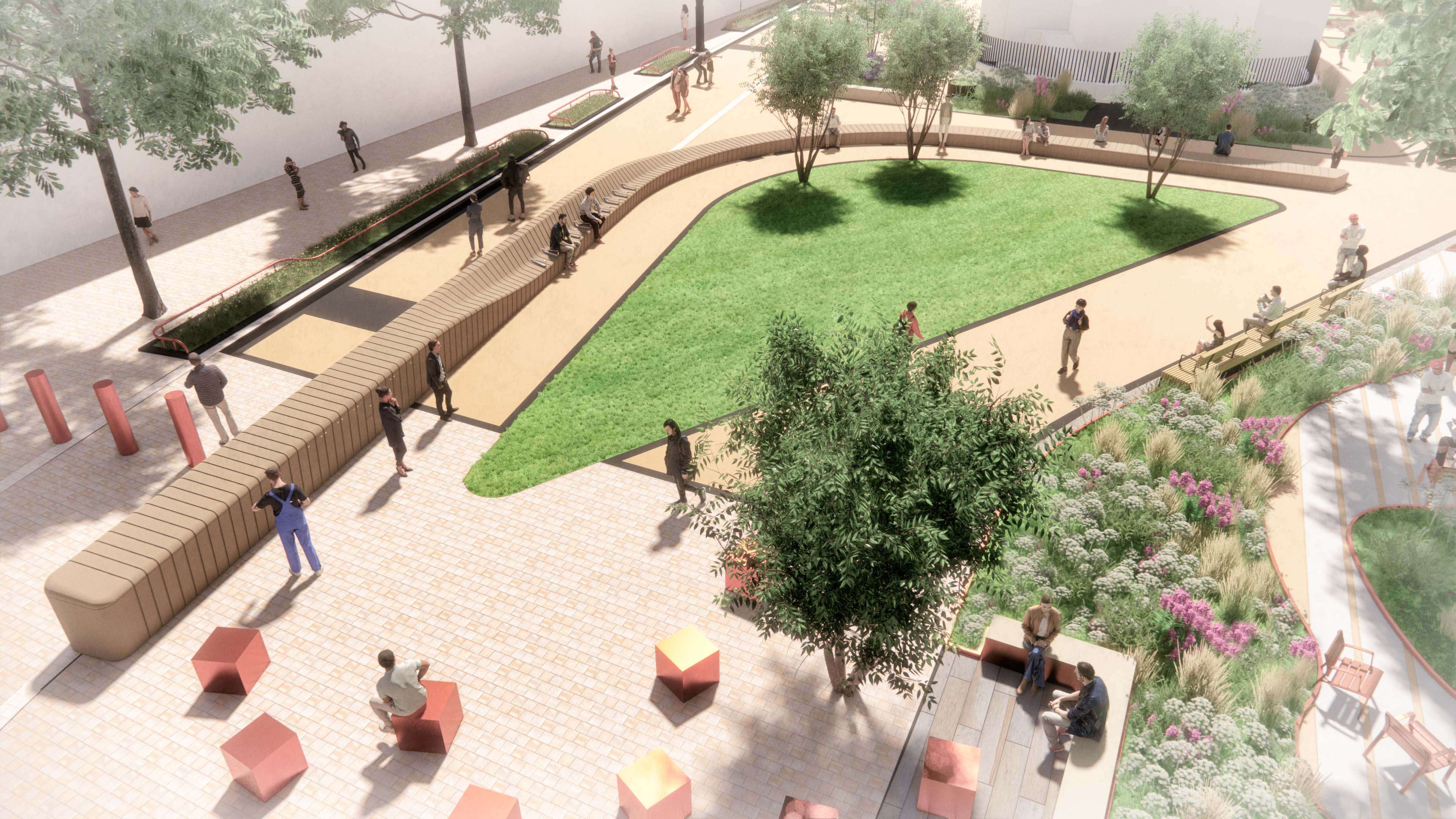
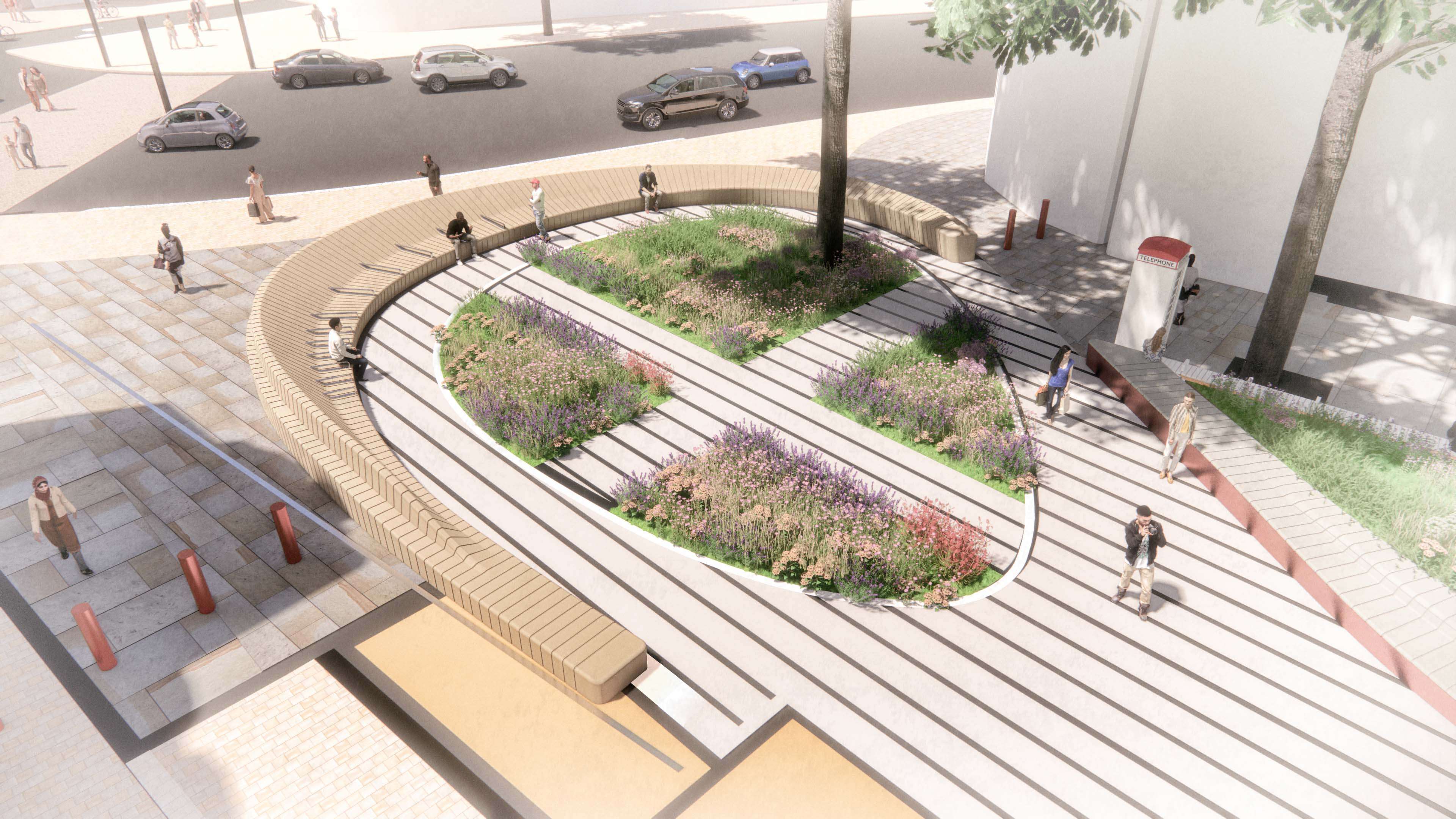
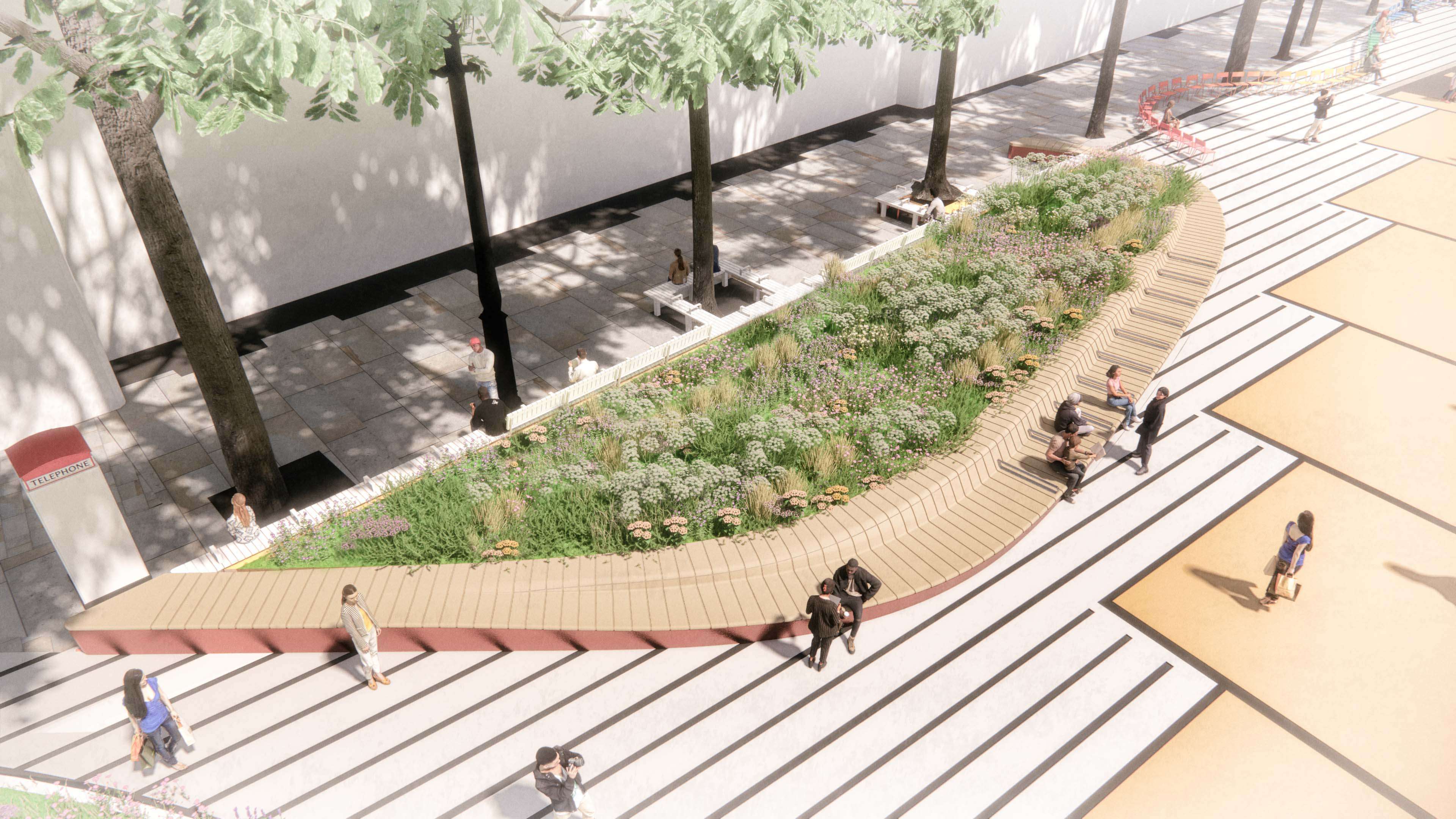
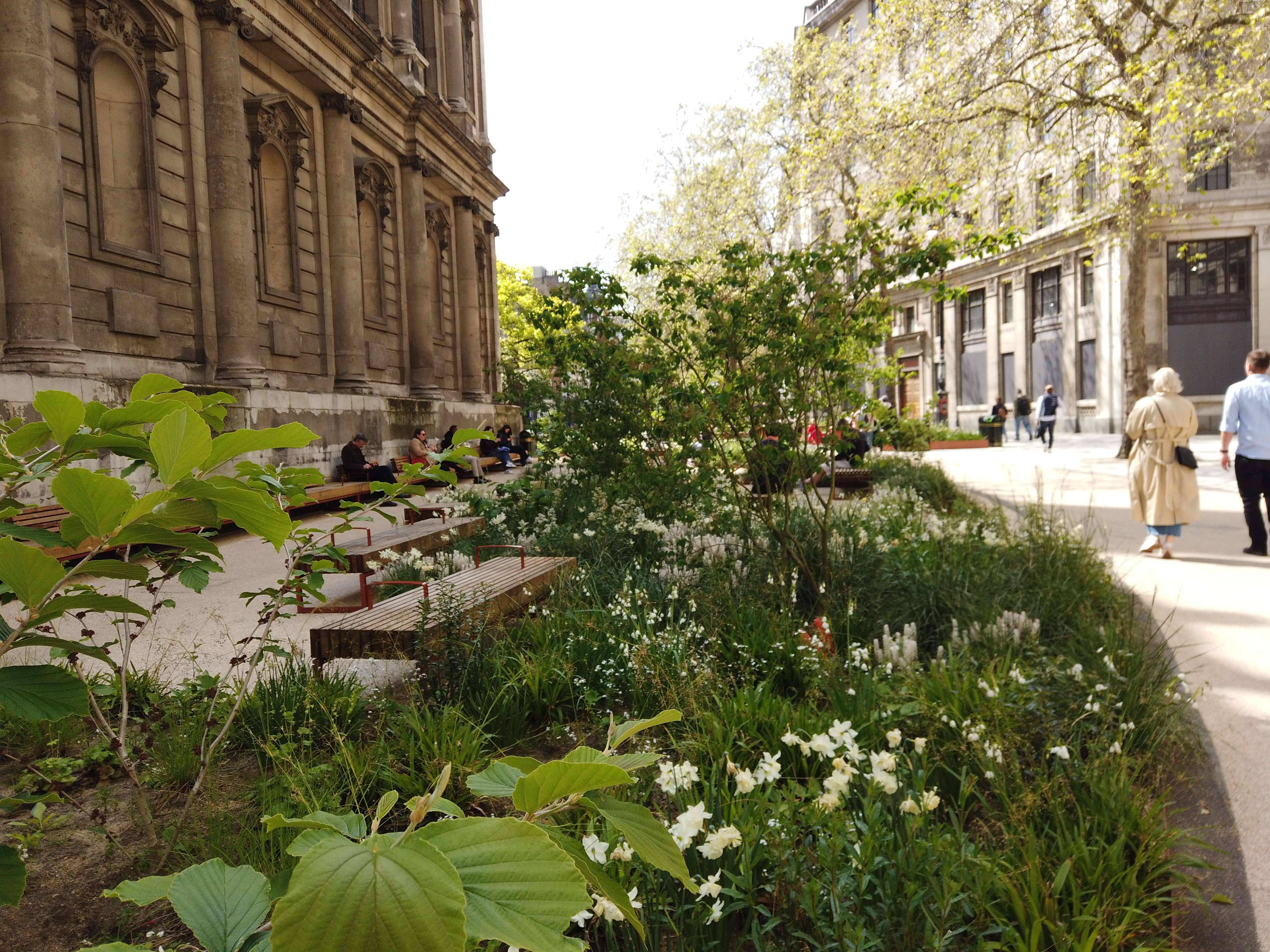
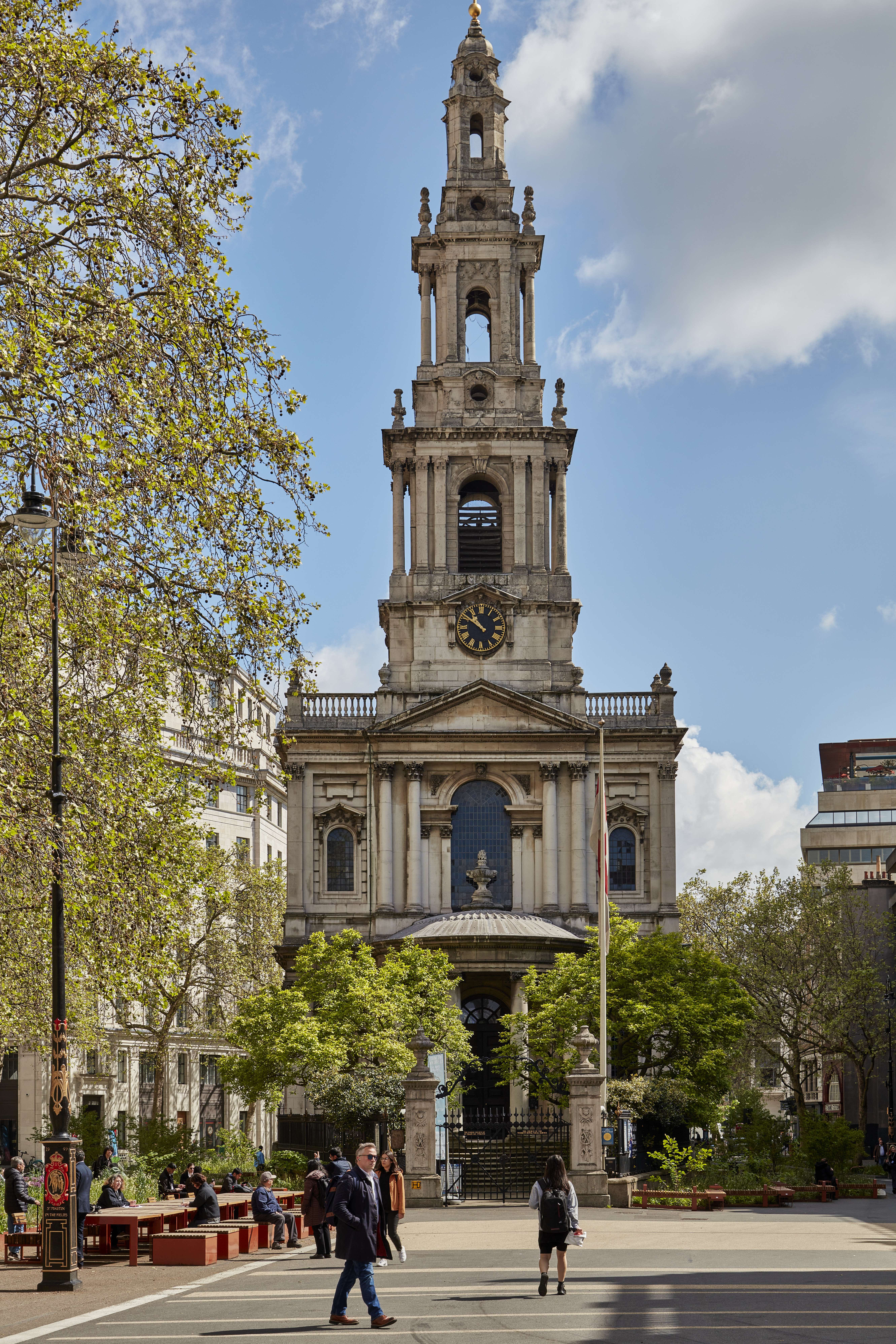
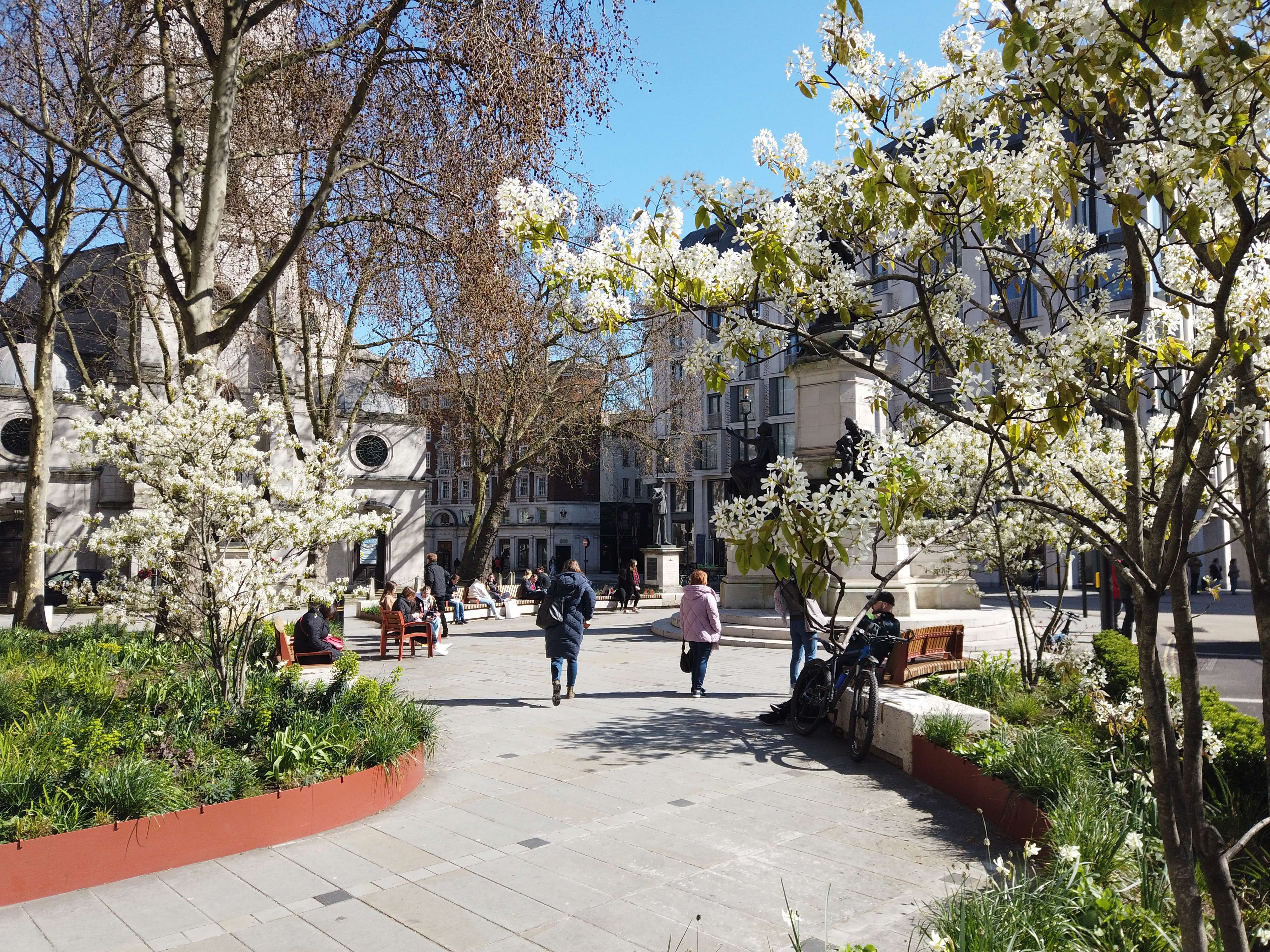
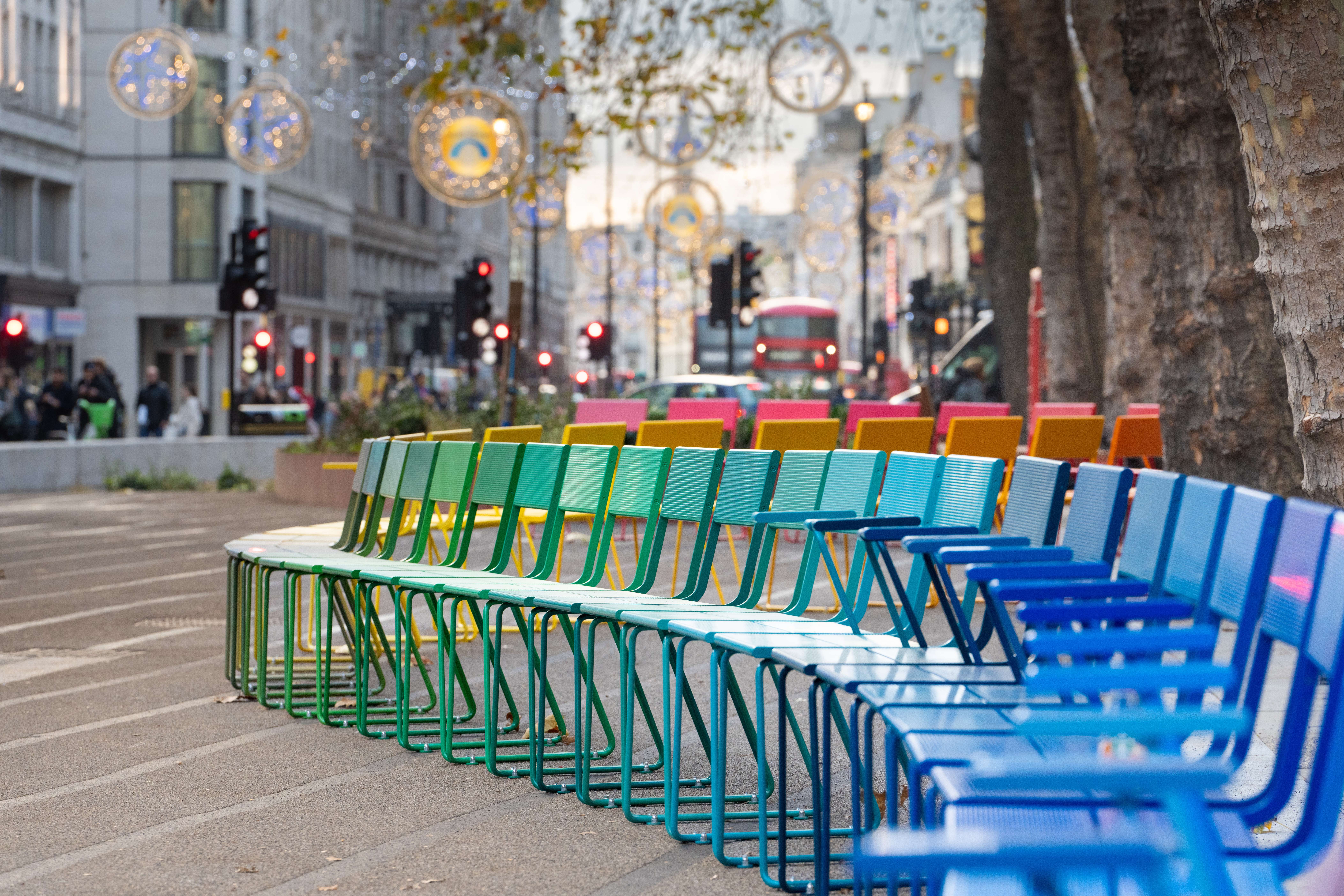
Strand Aldwych
Strand Aldwych
Strand Aldwych
Strand is an important east/west route in Westminster, central London and has been since AD190. Aldwych is an early 20th century Parisian-style boulevard. Combined, they formed a heavily trafficked gyratory, which made Strand a hostile environment for pedestrians and cyclists. Fourteen million people use it annually.
Altering traffic flow was key to creating a unique new cultural space with room for nature. In 2021, traffic on Strand from Waterloo Bridge to St Clement Danes was removed. Hush fell. Aldwych was made two-way, and slower and safer. Five new signalised pedestrian crossings were installed on desire lines.
Strand points to a greener, healthier, more inclusive city. It is of national and international significance. It reopened in December 2022 with new trees, lawns, communal dining, biodiverse planting, rain gardens and cycle stands. Dwell times have since increased, and air quality dramatically improved. Multi-coloured seats line a large performance space with programming commissioned by the surrounding institutions.
Removing traffic has allowed a safer and calmer space to emerge. People now sit chatting, lunching, reading and for the first time, the street connects to the life going on around it. The space feels generous, flexible and for the people. St Mary le Strand – the finest 18th century church in London – had been freed from heavy traffic. Now, richly planted gardens provide urban sanctuaries either side of the church with Strand joining the dots between major spaces, including Covent Garden.
The design brings nature into the city, allowing for better management of rainfall. Planting is biodiverse and pollinator friendly. Water management, drainage and drought planning have been incorporated. Seventy stakeholders helped co-create and test ideas.
SAVE Britain’s Heritage see Strand as “the best and most enlightened example of good town planning since the creation of Covent Garden Piazza in the 1970s.” It has been described as the best thing to happen to London in decades.
Strand’s mature Plane trees are now complemented with 41 new trees 1,025 shrubs, 8,366 herbaceous plants, 37,395 bulbs, 244 ferns, 3,739 grasses and 169 metres of turf. Local stakeholders will lead further greening.
Making Strand, south of Aldwych, traffic free means pollution levels have dropped significantly, even at peak times. Sitting within a GLA-designated Air Quality Focus Area means pollution has been monitored here since 2015, Data provided by the London Air Quality Network shows the design’s impact with a reduction in NO2 of 56%, from 76mgm3 in 2019 to 34mgm3 in 2022, well below the 40 mgm3 target. Hourly pollution levels show a significant decrease. A stakeholder group will continue monitoring air quality.
Increased dwell time is supporting businesses. Canon Babington of St Mary le Strand, one of London's finest 18th century churches, has also reported a visitor spike and has secured heritage funding.
Strand is now a cultural destination and installations and events will be hosted here. The first, The Voiceline, marked the centenary of the BBC’s first broadcast.
